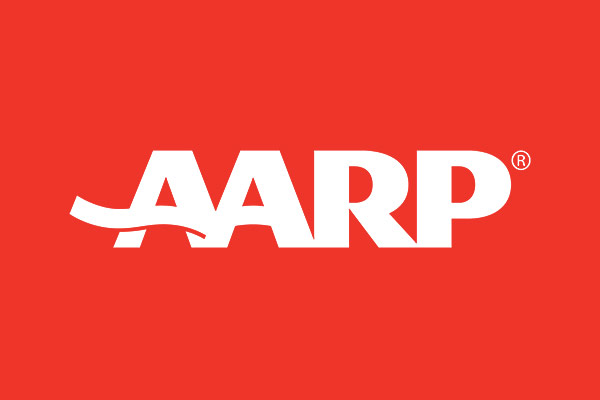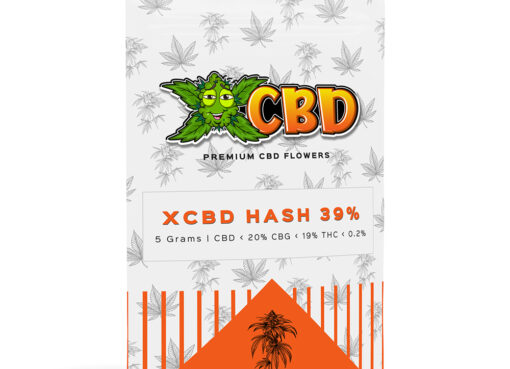Introduction
UnitedHealth, “the eighth place in the Fortune Global 500 in 2021” and “the largest commercial health insurance company in the United States”, was established in 1973 and went public in 1984. In its 47th year, it has become a health insurance giant with annual revenue of $260 billion.
What does it depend on? And how did the layout step by step achieve today’s grand occasion?
Let’s take a brief look at UnitedHealth’s revenue structure. Its revenue comes from two different sectors:
Health insurance business (UnitedHealthcare) and health management business (Optum), in 2020, UnitedHealthcare achieved an operating income of 200.875 billion US dollars, Optum achieved an operating income of 138.108 billion US dollars, the revenue ratio between the two is close to 6:4, and the gap is constantly narrowing.
The health insurance business (UnitedHealthcare) sets up the following 4 business modules according to different types of customers:
Among them, the elderly business is the business module with the highest operating income for the health insurance of UnitedHealth Group, and the operating income in 2020 will account for 45.18% of the total income of the health insurance business. The company serves seniors over the age of 50 through a partnership with the American Association of Retired Persons (AARP) and the Centers for Medicare and Medicaid Services (CMS).
The health service business segment (Optum) is mainly composed of three business lines:
1) The Health Management (OptumHealth) module focuses on providing healthcare services and health-related financial services to group clients.
2) Health management information system (OptumInsight) focuses on providing data support, medical information service system, data management, and consulting services for hospitals, insurance institutions, governments, biotechnology companies, and other institutions.
3) OptumRx is a Pharmaceutical Benefit Management (PBM) business, which effectively manages drug costs through the organization and coordination of insurance institutions, drug manufacturers, hospitals, and pharmacies. OptumRX has a drug delivery system covering 66,000 pharmacies and two post office systems, as well as a back-office support system connecting hospitals, pharmacies, and insurance companies.
A start-up company organized by a doctor has made great strides and has evolved into a huge group with a complex business line and a market value of 400 billion yuan. Its historical background and business ideas are intriguing. The following will analyze it from two aspects: external and internal.
Where does the east wind come from?
The lack of public medical insurance in the United States has created the prosperity of the commercial health insurance market in the United States, and UnitedHealth was established in the year of the legislation of the Health Organization Maintenance Act. The combination of the two creates an excellent development background for UnitedHealth:
– Supplementing social insurance: Commercial insurance industry booms
In the United States, public health insurance primarily targets children, the poor, and the elderly over the age of 65. For U.S. citizens aged 19-65, American society has a huge deficit in this area, with social security coverage at only 20.8% as of the second quarter of 2020. This trade-off is complemented by the extremely developed commercial medical insurance.
As of 2020, the medical insurance coverage in the United States is shown in the figure below. The number of people participating in commercial insurance accounts for 62.2% of the total population, while public medical insurance covers only 37.9% of the total population. Still, 9.4% of U.S. citizens are not covered by health insurance.
-In the early days of its establishment, it coincided with the trend of managed medical insurance
At the same time, in terms of classification, UnitedHealth is also a 100% managed care institution. This insurance model occupies the mainstream of the U.S. commercial insurance market, with a penetration rate of 75.4% in the entire medical insurance market. In commercial medical insurance, the proportion reached 99.1%.
What is managed care?
Essentially, managed care is a medical model that integrates the provision and management of medical services. It is characterized by the direct participation of insurance organizations in the management of medical service institutions, to reduce unnecessary medical costs. In the traditional medical insurance model, the insurance company is in a third-party position, and only passively pays the corresponding medical expenses after the customer receives medical services, which will inevitably lead to uncontrollable medical expenses. In managed-care insurance, when a medical provider agrees to be responsible for all of a client’s medical services at a pre-agreed fixed fee, he accepts and assumes a considerable part of the financial risk. Therefore, if the hospital wants to make a profit, it must reduce the service cost to reduce unnecessary expenditure in each link.
Over time, managed care has gradually expanded into many different models, there are currently 5 types, but the earliest developed and vigorously promoted by the government is the Health Management Organization (HMO) model:
After the government launched the Medicare and Medicaid plans in 1965, the charges for medical services and the use of medical resources continued to increase, and the rising government medical insurance spending attracted the attention of the US Congress.
Ellwood, Jr, the proponent of the HMO concept, have discussed how to find ways to curb medical inflation. By 1973, with the promulgation of the Health Organization Maintenance Act, HMO was pulled to the center of the historical stage, and the decree mainly emphasized three points:
1. The federal government can provide subsidies and loans for planning, operating, and expanding HMOs
2. Federal statute supersedes state statute restricting the development of HMOs
3. Companies with 25 or more employees offer at least one federally certified HMO health insurance plan in addition to traditional health insurance, as in this year, Paul M. Ellwood, Jr., and other Physicians built UnitedHealth’s predecessor: Charter Med Incorporated, the HMO model.
The domestic situation is similar to that of the United States in the late 1970s: since the new medical reform in 2009, the expenditure of my country’s medical insurance fund has continued to expand, and there is a serious payment crisis lurking in the long run. Some studies show that the employee medical insurance fund will have a serious deficit of 735.3 billion yuan in the accumulated balance of the fund by 2024. Therefore, at this stage, the China Banking and Insurance Regulatory Commission will focus on improving the coverage of commercial health insurance and reducing the medical burden on the people. Strengthening the integration of health insurance and health management, transforming from “protecting diseases” to “promoting health”, while trying to effectively control medical costs, can improve the health status of the entire population and improve the experience of patients receiving medical services, which is more in line with Healthy China 2030 and Guidance of the action plan for the high-quality development of the health industry.
Riding on this gust of wind, large and small insurance companies such as China Life, Fuxing United Health Insurance, and Ping An Life, and third-party insurance service agencies such as Huamei Haolian, Meixin Health, and Universal Care have begun to vigorously develop and design health insurance.
Although standing in the wind, not everyone can go to the sky. . .
UnitedHealth’s business model forms a strong closed-loop of insurance + health management + PBM, and the synergies within the group help UnitedHealth grow revenue and control costs. At the beginning of its establishment, it received strong policy support, and soon reached a cooperation with the government plan. Its participation in the elderly plan and subsequent association cooperation provided it with a long-term and stable growth of customers. Its data management technology, which has been focused on developing applications for more than 40 years, has successfully helped UnitedHealth improve user experience, regulate medical programs, reduce loss ratios, improve platform security and continuously expand its business scope.
– Business model closed loop
The full play of synergistic effect is the most prominent feature of UnitedHealth Group in the layout of the industrial chain. On the one hand, UnitedHealth’s insurance company provides a stable source of business for the three companies under the name of Optum. On the other hand, the professional development of the Optum brand in the fields of health management, system construction, and pharmaceutical services has also greatly promoted the development of UnitedHealth’s insurance companies. Optum can not only improve the service capabilities of insurance companies and become a business booster for insurance companies; it can also assist insurance companies to strengthen the monitoring of medical behavior, effectively reduce the cost of claims, and become a cost control system for the main insurance business.
– Cooperate with government agencies to ensure a stable source of customers
In 1979, UnitedHealth received federal accreditation and developed a series of policies to serve the elderly. This makes UnitedHealth a leading senior health service provider. In the subsequent development, the customer acquisition path of cooperation with government agencies and industry associations runs through the entire development context of UnitedHealth Group.
The partnership with the American Association of Retired Persons, which began in 1997, can be said to be a milestone in the acquisition of seniors programs, directly helping UnitedHealth’s senior business grow to 8.5 million seniors.
From the revenue data, it can be seen that the elderly customers brought by various cooperation have brought UnitedHealthcare’s elderly business segment the highest proportion of revenue and has maintained steady growth for many years in a row. (Data: Bloomberg)
Similarly, judging from the number of group commercial health insurance registrations during the epidemic, due to the rise in unemployment, both self-insurance plans and “full insurance” have experienced a significant decline. However, the revenue of its health insurance business unit in 2020 is still There was a clear uptick, partly attributable to the steady rise in the seniors business.
-Focus on the development and application of data technology
Just as UnitedHealth positioned itself as “the technology platform of the medical and health industry” when it went public in 1984, he was the first group to realize that emerging information technology would bring disruptive changes to the health industry and has been committed to Differentiate yourself from your peers with effective data technology solutions.
As early as 1988, UnitedHealthcare started its own PBM business, not just for drug management, his ambition was much bigger – to intervene in diagnosis and treatment in advance, control, and mine the patient database itself.
With this goal in mind, they became the first managed medical insurance institution to develop a pharmacy drug formulary and put forward pre-accreditation requirements for admission, and achieved stricter cost control for prescription drugs and treatments than other HMO institutions at the time.
At the same time, UnitedHealth Group applies data analysis technology to its business to match patients with more effective equipment and more suitable doctors in the medical system, and improve follow-up doctors’ treatment plans based on the collected treatment plans for all the same diseases in the network. Reduce medical costs based on recovery rates. In 2009, the eSync platform was launched to actively manage the health of users and reduce the incidence of diseases. Based on health data such as physical condition, lifestyle, and payment records, eSync builds a user’s health profile, provides users with customized health care plans, and can screen and automatically reach high-risk customers to provide them with plans to reduce health risks.
It has a large amount of residents’ health information, which enables it to price more accurately, thereby reducing the loss ratio. At the same time, benefiting from the low loss ratio, UnitedHealth has more room to compress premiums, thereby acquiring customers, escaping the “death spiral” and forming A virtuous cycle that increases sustainability.
It is worth mentioning that there has been no major data leakage since the establishment of OptumInsight, which reflects the good security of the platform. Anthem, the second-largest health insurance company in the United States, was hacked in 2017, resulting in 80 million user data. Leak, compensate victims $115 million.




